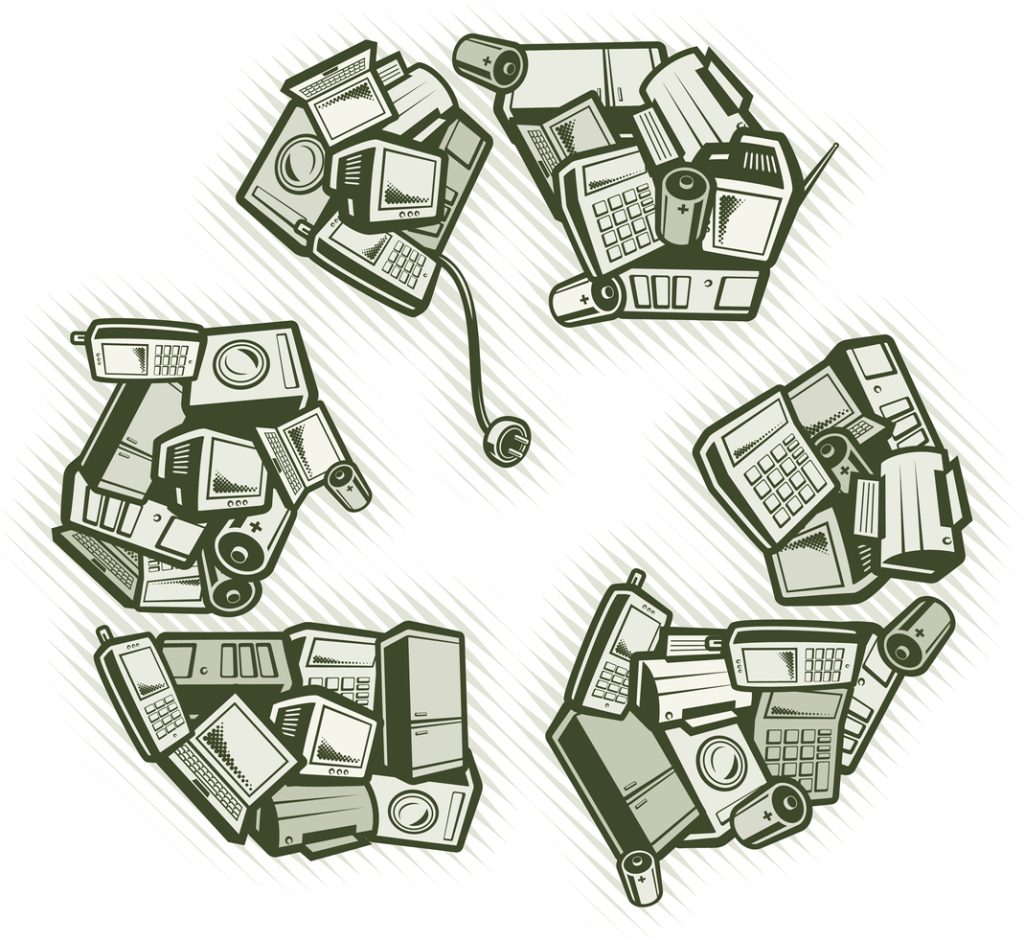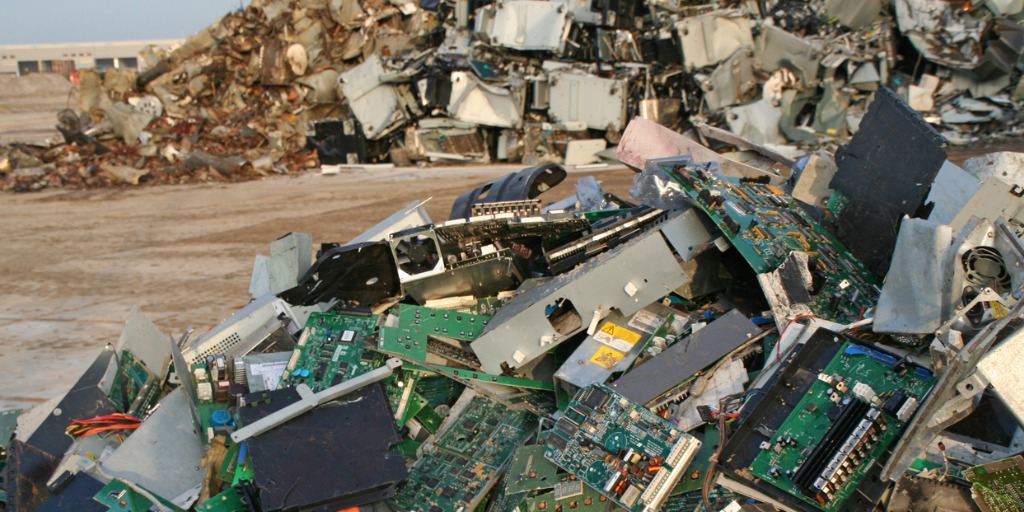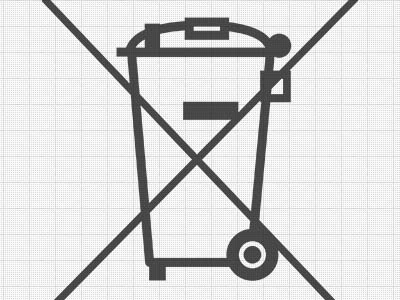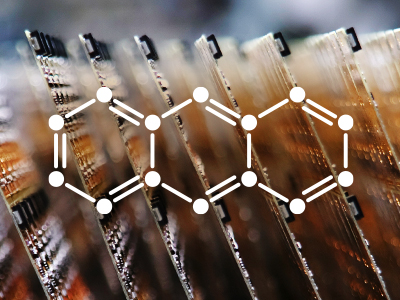Waste from electrical and electronic equipment includes a large range of devices such as computers, refrigerators, mobile phones, etc. at the end of their life. This type of waste contains a complex mixture of materials, some of which are hazardous. These can cause major environmental and health problems if the discarded devices are not managed properly. In addition, modern electronics contain rare and expensive resources, which can be recycled and re-used if the waste is effectively managed.
Improving the collection, treatment, and recycling of electrical and electronic equipment (EEE) at the end of their life can:
- improve sustainable production and consumption
- increase resource efficiency
- contribute to the circular economy
The WEEE Directive

WEEE is an acronym for Waste Electrical and Electronic Equipment (also widely known as e-waste). The amount of e-waste generated every year in the EU is increasing rapidly and is now one of the fastest-growing waste streams. EU rules on WEEE aim to contribute to sustainable production and consumption.
The EU WEEE Directive designates safe and responsible collection, recycling, and recovery procedures for all types of electronic waste. The directive also imposes the responsibility for the disposal of waste electrical and electronic equipment on the manufacturers or distributors of such equipment.
History of WEEE Directives
In April 2002, six WEEE producer responsibility organizations with operations in Austria, Belgium, the Netherlands, Norway, Sweden, and Switzerland founded the WEEE Forum. All organizations are open, non-profit-oriented compliance schemes run on behalf of producers or producer associations. The WEEE Forum is the world’s largest multi-national center of competence as regards operational know-how concerning the management of waste electrical and electronic equipment.
The WEEE Directive refers to the European Community Directive 2002/96/EC which regulates the management of electrical and electronic waste. It was signed on January 27, 2003, and together with RoHS Directive 2002/95/EC became European law in February 2003. The current WEEE Directive 2012/19/EU entered into force on August 13, 2012, and became effective on February 14, 2014.
How WEEE Fits with Other EU Directives
Three directives currently regulate the way electrical and electronic goods are designed, manufactured, and disposed of at the end of their useful life. These are Ecodesign, RoHS, and WEEE. Ecodesign deals with the reduction in energy consumption, RoHS deals with the removal of hazardous substances, and WEEE deals with the disposal of waste.
RoHS regulates the hazardous substances used in the manufacture of EEE and supports the WEEE directive by reducing the amount of hazardous chemicals used in production. The WEEE directive regulates the disposal of this same equipment and how products are managed at the end of their lifecycle (EoL) and encourages recycling and reuse in accordance with EU Directive 2012/19/EC.

E-Waste Generation
Many factors contribute to the generation of E-waste, such as the continuous innovation of technology, consumer upgrades, lifestyle changes, and the end of intended usage of products. E-waste is the most rapidly growing waste problem in the world. Computer devices account for nearly 70% of annual e-waste, 12% comes from the telecom sector, 8% from medical equipment, and 7% from electric equipment. 20 to 50 million metric tons of e-waste are disposed of worldwide every year. This is equivalent to throwing out 1,000 laptops every single second. China, with 10.1 million tonnes, was the biggest contributor to e-waste, and the United States was second with 6.9 million tonnes. India, with 3.2 million tonnes, was third. Together these three countries accounted for nearly 38% of the world’s e-waste last year 2020.
Europe is the second-largest generator of e-waste per inhabitant with an average of 16.6 kg/inh; however, Europe also has the highest collection rate (35%). The Americas generate 11.6 kg/inh and collect only 17% of the e-waste generated in the countries, which is comparable to the collection rate in Asia (15%).
E-Waste Hazards
According to the World Health Organization (WHO), electronic waste contains toxic materials that can leach into the environment and are dangerous to human health. Direct contact with toxic materials extracted from e-waste can expose workers to high levels of lead, mercury, cadmium, ar senic, polybrominated flame retardants, barium, and lithium. Such exposure can lead to irreversible health effects, including cancers, miscarriages, neurological damage, and diminished IQs. Other negative health effects of these toxins on humans include brain, heart, liver, kidney, and skeletal system damage.

Features of WEEE Directive 2012/19/EU
- The WEEE Directive (2012/19/EU) aims to reduce the amount of waste electrical and electronic equipment that ends up in landfill.
- The directive may require changes throughout the EEE product cycle, including improved product design to ease dismantling, recycling, and reuse.
- The directive includes the provision of national WEEE collection points & processing systems, which allows consumers to put WEEE into a separate waste stream to other waste, resulting in it being processed, accounted for, and reported to the national enforcement authority.
- Producers are expected to meet the cost of the collection and processing of WEEE. The implementation of a national WEEE scheme requires involvement from national and local government, EEE manufacturers, vendors, distributors, and consumers.
Types of E-Waste
- Type 1 – Major appliances (refrigerators, washing machines, dryers etc.)
- Type 2 – Small appliances (vacuum cleaners, irons, blenders, fryers etc.)
- Type 3 – Computer and telecommunication appliances (laptops, PCs, telephones, mobile phones, etc.)
Sources of E-Waste
- Waste generated from the products used for data processing such as computers, computer devices like monitor, speakers, keyboards, printers etc.
- Electronic devices used for entertainment like TV, DVDs, and CD players.
- Equipment or devices used for communication like phones, landline phones, fax etc.
Process of E-waste Recycling
- Collecting and Transporting
- Shredding and Sorting
- Dust Extraction
- Magnetic Separation
- Water Separation
- Purification of Waste Stream
- Preparing Recycled Materials for Sale
The Six Categories of WEEE
The WEEE Directive applies to all EEE (electrical and electronic equipment) and initially covered 10 categories. The original 10 categories have now been replaced by the following six new major categories listed in Annex III to WEEE Directive 2012/19/EU:
- Temperature exchange equipment: fridges, freezers, air conditioning, etc.
- Screens, monitors, and equipment containing screens having a surface greater than 100 cm²: TVs, computer monitors, etc.
- Lamp bulbs
- Large equipment (any external dimension more than 50 cm): washing machines, dish washers, cooking stove and oven, cookers, luminaries, large printers, copying equipment, large equipment in general, etc.
- Small equipment (no external dimension more than 50 cm): vacuum cleaners, calculators, video cameras, cameras, hifi equipment, watches and clocks, smoke detectors, payment systems, etc.
- Small IT and telecommunication equipment (no external dimension more than 50 cm): mobile phones, tablets, routers, laptops, GPS, printers, etc.
Timeline of implementation of the European WEEE Directives
- June 2000 – Proposal for WEEE Directive introduced
- February 2003 – Directive (2002/96/EC) entered into force
- August 2004 – Deadline for member states to transpose into national legislation
- July 2005 – Decree No. 151 entered into force
- December 2008 – Proposal for recast WEEE Directive introduced
- July 2012 – Recast WEEE Directive signed by European Parliament and Council
- August 2012 – Recast Directive (2012/12/EU) entered into force
- February 2014 – Deadline for member states to transpose recast WEEE Directive into national legislation
- February 2014 – Directive (2002/96/EU) repealed
- April 2014 – Decree No. 49 entered into force
- August 2015 – Deadline to achieve new, stricter minimum targets for WEEE categories
- August 2018 – Implementation of new product categories and their minimum targets
Conclusion
The WEEE Directive is one of many ways in which the EU is addressing the growing problem of e-waste management. The WEEE Directive regulates how these products are managed at the end of their lifecycle and encourages recycling and reuse. Our next article will cover compliance requirements for producers of EEE in greater detail.





